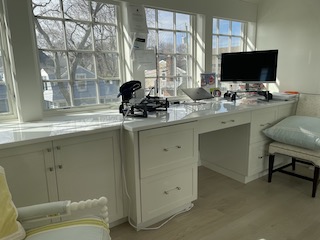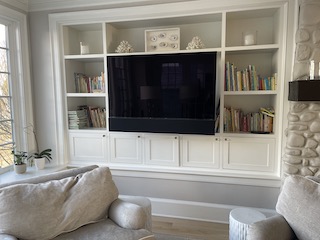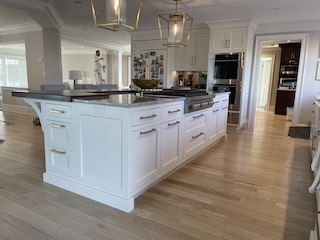1. Assess the cabinets: Before you start painting, assess the condition of the cabinets. Are they in good shape or do they need repairs? Are they made of wood or another material? This will determine the type of paint and preparation needed.
2. Remove hardware and clean: Remove all hardware such as handles, knobs, and hinges. Clean the cabinets thoroughly with a degreaser to remove any grease, dirt, or grime.
3. Sand the cabinets: Use a medium-grit sandpaper to lightly sand the cabinets. This will create a rough surface for the primer and paint to adhere to. Make sure to wipe down the cabinets with a clean cloth to remove any dust.
4. Fill in gaps and holes: Use wood filler to fill in any gaps or holes in the cabinets. Allow the filler to dry completely and then sand it down until it’s smooth.
5. Prime the cabinets: Apply a coat of primer to the cabinets. This will help the paint adhere better to the surface and ensure a smooth finish. Allow the primer to dry completely.
6. Paint the cabinets: Use a paint sprayer or brush to apply the paint to the cabinets. It’s best to use a high-quality paint designed for cabinets and trim. Apply two or three thin coats, allowing each coat to dry completely before applying the next one.
7. Reinstall hardware: Once the paint has dried completely, reinstall the hardware.
Here are a few reasons why adding new hardware to kitchen cabinets can be beneficial:
Aesthetics: Changing the hardware allows you to update the style of your kitchen without going through a complete renovation. You can choose hardware that complements your overall kitchen design and personal taste.
Functionality: Upgrading hardware can improve the functionality of your cabinets. For example, replacing small knobs with larger handles can make it easier to open and close the cabinets. You can also opt for soft-close hinges or drawer slides, which can add convenience and prevent slamming.
Cost-effective: Adding new hardware is a relatively affordable way to give your kitchen a makeover. It is generally less expensive than replacing the entire cabinets or undertaking a major renovation project.
When selecting new hardware, consider factors such as the material, finish, size, and style. Ensure that the hardware you choose matches the existing design elements of your kitchen, such as the color scheme and overall theme.
Remember to measure the existing holes in your cabinets accurately before purchasing new hardware. This will ensure that the new hardware aligns with the existing drill holes or that you choose hardware that fits in a different way (such as handles that cover multiple holes).
Overall, adding new hardware to kitchen cabinets can be a worthwhile investment to enhance both the appearance and functionality of your kitchen.




